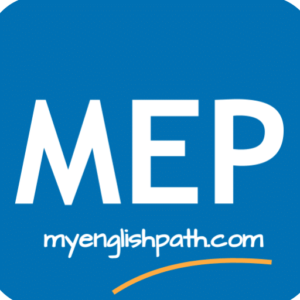Table of Contents
Introduction
The verb be in English is different from the other verbs because it has more forms and it can be used as (1) an auxiliary verb to make different verb tenses (affirmative, negative, and questions), and as (2) a full verb.
We will discuss both cases, and we will give examples of how it is used to form verb tenses.
Forms of the verb be
The verb be has the following forms:
- be: This is the base form or infinitive.
- am, is, are: These are the present forms.
- was, were: These are the past forms.
- been: This is the past participle form.
- being: This is the present participle form.
Be as an auxiliary
The verb be is used as an auxiliary; it does not have a meaning on its own but it helps to form the continuous verb tenses, the passive voice, and some special structures. That is why it is sometimes described as a “helping” verb.
Be in present continuous tense
We use be in its 3 forms to make present continuous tense sentences to describe actions that are happening at or around the time of speaking and to talk about future plans.
I am
she, he, it is
we, you, they are
- I am taking a course in Spanish this semester. (Affirmative)
- He is not planning to participate in the activity. (Negative)
- Are they sleeping now? (Question)
Be in past continuous tense
We use be in 2 forms to make past continuous tense sentences to describe actions that happened and completed in the past.
I, she, he, it was
we, you, they were
- She was eating her breakfast when the bus arrived. (Affirmative)
- We were not driving when the accident happened. (Negative)
- Were you washing the dishes? (Question)
Be in future continuous tense
The verb be is also used in the future continuous tense in its base form be because it comes after the modal will.
- At 8 am tomorrow, we will be going to the airport.
- She will be wrapping the gifts in the evening.
- When will you be checking the documents?
Be in perfect continuous tenses
We use be in the present and past perfect continuous tenses in its past participle form been.
(The auxiliary verb have/has is always followed by past participle forms of verbs.)
- We have been studying for a long time. (present perfect continuous)
- It had been snowing for hours when we decided to go skiing. (past perfect continuous)
- By noon, she will have been sleeping for 10 hours. (future perfect continuous)
Be in passive voice
The verb be is an essential part of every passive voice sentence. Every passive voice sentence has be + past participle verb.
It is used in different forms (am, is, are, was, were, been, be, being) depending on the tense and the subject.
- Chicken is cooked in many ways around the world. (present simple)
- The flowers are being picked up. (present continuous)
- All the products were sold yesterday. (past simple)
- The place had been cleaned up before the police arrived. (past perfect)
- The show will be watched by millions of people. (future)
Be in the structure be going to
Planned future actions are expressed using the structure be going to. The verb be can take the form of am, is or are, depending on the subject.
- I am going to attend a conference next month.
- He is going to spend the vacation in Sicily.
- We are going to submit the report in two hours.
When used in the past, the structure was/were going to expresses unfulfilled intention in the past.
- I was going to resign, but I changed my mind.
- We were going to pass by your office, but we didn’t have time.
Be in the structure be able to
Be able to is a modal-like structure that expresses ability. The verb be takes different forms depending of the tense and the subject.
- I am able to help them./He is able to help them./They are able to hep us. (present)
- I was able to help them./She was able to help them./We were able to help you. (past)
- We will be able to help you. (future)
- They have been able to pass the tests. (present perfect)
Be as a full verb
Be can be a full (or main) verb of a sentence. This happens in the present simple and past simple tenses.
When be is the main verb, it is followed by a noun, an adjective, or an adverb.
Notice that we use the verb be to make negative sentences and questions.
- He is a teacher./He is not a teacher./Is he a teacher? (present, followed by noun)
- I am tired now./I’m not tired./Why am I tired? (present, followed by adjective)
- The movie was exciting./It was not exciting./Was it exciting? (past, followed by adjective
- They were here./They were not here./Were they here? (past, followed by adverb)
⇔ Take a quiz on the verb be (quiz 1).
